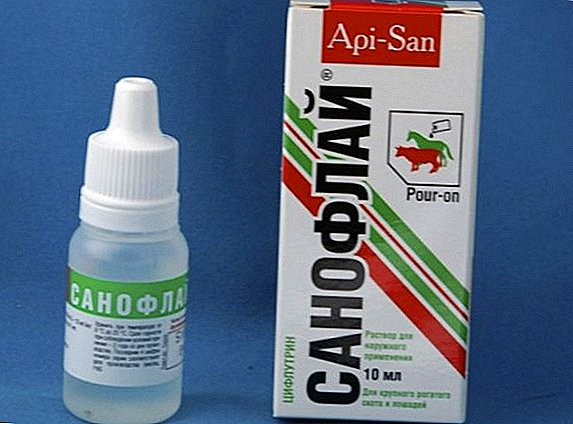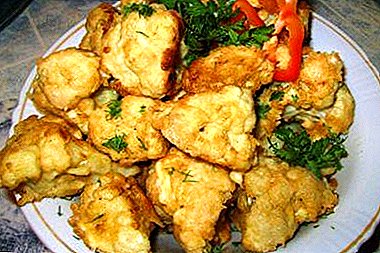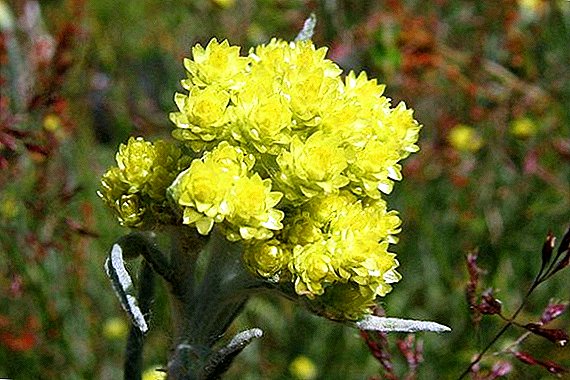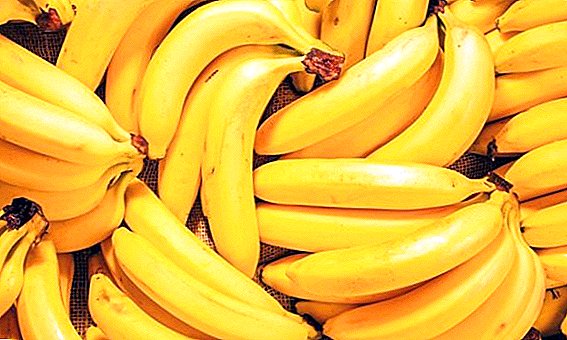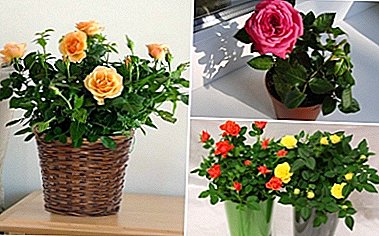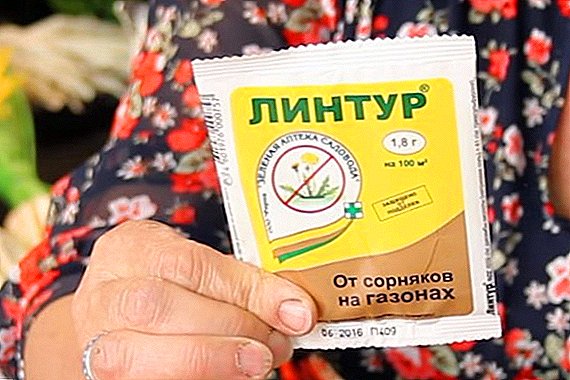
Since ancient times, in Russia, valued a small red-yellow apple - Moscow pear for appropriate ripening for the first harvest festival - Apple Savior.
After all, do not eat at the beginning of August A fresh, sanctified apple in the church among the Eastern Slavs was considered a great sin.
Maybe that's why this native Russian variety was called so gently and ambiguously: Sladchina, Spasovka, Sadova, Pestrushka, Skoropospelka, Pear Red.
Description of the Grushovka Moskovskaya variety and what the apples look like in the photo - you will find all this in the article.
What kind refers
 Apple tree Grushovka Moscow refers for summer varieties.
Apple tree Grushovka Moscow refers for summer varieties.
Resistance to frost in the cold season, early fruiting, high yields served as the basis for choosing a Moscow pear tree as a stock for new varieties. Among them is a variety of apples Pear is early and Siberian souvenir.
Grushovka Moskovskaya - an early grade of apples. The ripening period of apples accounts for for 2 weeks at the beginning of August.
The fruits of this variety are not subject to harvesting without processing, as they have shelf life of not more than 60 days.
Fruit pears Moscow preferred for fresh consumptionas they rich in ascorbic acidinstant soluble sugars and trace elements.
Apples Grushovka have a calorie content of 47 kcal.
Apples have excellent taste and multivariate processing (jam, jams, juices, candy, baby food, fruit wine, dried fruit).
By the summer classes include: Melba, Bugler, Gornoaltaisk, robin, Feast, Silver hoof, seedling Slontsedara, Solntsedar, Green Valley, White filling, Yandykovskoe, Hero of the day, Terentevka, South, The July Chernenko, Quintus, Korobovka, wonderful, Elena, Slava winner , Anniversary.
Pollination
Variety Grushovka Moskovskaya - apple tree self-infertileFor the ovary of the fruit of which pollination of another variety is required. That is why, often, novice gardeners planted trees in the prescribed time and do not bear fruit.
For Grushovka Moskovskaya, the best pollinators are: Cinnamon, Papirovka, Bellefleur-Kitaika, Antonovka.
In the selection of pollinator should be considered:
- coincidence of flowering and fruiting periods;
- varietal advantages of the pollinator for the area;
- Pollinators themselves should be pollinated by major varieties.
Important: It is impossible in the garden planting to be limited to one variety: it is possible to get a poor harvest without pollinating trees or to remain without it at all.
Description varieties Grushovka Moscow
Consider separately the appearance of the apple and fruit.
 In two years, a sapling of this variety has time to form skeletal branches. And after ten years the plant turns into a tall tree (up to 8 meters) with lush wide pyramidal crown, and with age - in the form of a ball.
In two years, a sapling of this variety has time to form skeletal branches. And after ten years the plant turns into a tall tree (up to 8 meters) with lush wide pyramidal crown, and with age - in the form of a ball.
The adult pear plant has a lush crown and reaches in height of 5-7 metersthat should be considered when landing. The bark of two-year-old saplings is smooth, dark purple, in mature trees it is orange-yellow.
Large elongated leaves on long petioles with finely toothed margin slightly pubescent from the back and have a yellowish tint. Leaf blades in some plants are reversed with large stipules.
Blooming with pink buds (in May), the plant in the process of flowering is covered with large white flowers, saucer-shaped, with 10 stamens and pistil.
Fragrant fruit - lightly oblate globularare different multicolor coloring: from yellow-green to rich yellow-red, with strokes, specks and ruddy barrels on the sunny side.
The skin is thin, smooth and shiny with natural wax. The flesh is slightly yellowish, closer to the skin - pink, loose and juicy. An overripe fetus acquires the powderiness of fiber.
Seeds (in closed chambers) are medium in size and light brown in color. The size of the apples are small (60-100 gr.). With good care can reach 120 grams. The taste of fruit - pronounced sweet-sour.
Reference:Pear fruit contains a significant percentage of ascorbic acid, which requires precautions to preserve the enamel of the teeth. It is recommended after eating apples to rinse your mouth thoroughly with water.
A photo








Breeding history
Its modern name Grushivka received a long time ago, even before it was described as a variety of well-known connoisseur of fruit trees. A. Bolotov.
Yes, and the "pear tree" it became because it seemed to a pomolog that the shape of its crown at an early age is similar to a ripe pear.
A clarification - "Moscow" - had to be done to establish a difference from the parallel variety that existed in the West Pears German.
 The cultivation of the variety went naturally., popular efforts, occupying the territory to the north Chernozem region, in the Urals, in developed Siberiasince apple trees famous for its winter hardiness.
The cultivation of the variety went naturally., popular efforts, occupying the territory to the north Chernozem region, in the Urals, in developed Siberiasince apple trees famous for its winter hardiness.
Apple Tree Grushovka Moscow in the 19th century settled in the same latitudes North America. At the exhibition in chicago presented it under the name Tetfsky, but In Canada, on the basis of pollination of its seedling, bred variety Mantetwhich is now popular with domestic gardeners.
Distribution region
The resistance of the variety to frosty winters (up to -50 degrees Celsius) extends its range from Central to Northern and East Siberian region.
Grushivka Moskovskaya since 1947 included in the State Register for the Northern regions of the European and Asian part of the Russian Federation.
Some of its Siberian varieties acquired creeping forms during the selection process. Pears successfully grown in the Volga region, in the Kuban, in Belarus and Kazakhstan.
Yield
The variety is famous for its yield, which appears periodically (after a year).
The variety did not acquire commercial value, but it especially appealed to private gardeners and summer residents, who were ready to care for an unpretentious tree in anticipation of a large crop (up to 180 kg from one trunk).
 The apple tree variety, the Pear tree, is durable (over 50 years), the apple tree begins to bear fruit in the 4th year. And already from the first year, 10 kg of apples can be removed from each tree.
The apple tree variety, the Pear tree, is durable (over 50 years), the apple tree begins to bear fruit in the 4th year. And already from the first year, 10 kg of apples can be removed from each tree.
That the tree develops more intensively after the first flowering, tear off 85-95% of flowers. And break off 50% of the fruit is still in the green stage.
So you can further normalize your harvest. The remaining apples will grow larger and sweeter.
If you do not follow this rule, then do not escape tree overload and the result can be disastrous. Watch the video just about it.
 Special requirement in choosing a landing site - sunny hill, closed to the wind. Ripened fruit pears tend to crumble, and from gusts of wind shattering will increase.
Special requirement in choosing a landing site - sunny hill, closed to the wind. Ripened fruit pears tend to crumble, and from gusts of wind shattering will increase.
Although the variety, in general, is characterized by unpretentiousness, Moscow pear sensitive to the damaging proximity of groundwater.
It is contraindicated lowlands, valleys, depressions, where the plant may undergo frost during the flowering season. Favorite soil for apple - sandy and deep loam.
Tip: If the groundwater still threatens the planting, it is necessary to dig drainage ditches next to the fruitful tree.
The optimal timing for planting an apple are: the end of April (from the 20th number) or autumn, until October 20 (at a later date it is better to plant a seedling until spring).
Important: Excavation work is done a week before landing.
Landing Algorithm:
- Dig a hole 70 cm deep with a diameter of 100 cm.
- To loosen the bottom of the pit without removing the ground.
- Put tin cans on the bottom.
- To fill a hole on 1/3 with a humus layer.
- Add mineral and organic fertilizers (superphosphate, wood ash, manure).
- Mix with loose earth at the bottom of the pit and fill it to half the height.
- A mound is formed from the ground.
- A stake is driven in the center of the pit, so that it rises 50 cm above it. Holding the trunk, the roots of the seedling spread on the mound on the north side of the stake.
- The roots are sprinkled with earth, all the time carefully tamping it down, so that the root neck rises above the ground level by 5 cm.
- The seedling is fixed to a hammered peg with plastic twine.
- The first watering should be abundant - until the soil is fully wetted (5 buckets).
- Pristvolnuyu surface mulch 5 cm peat layer.
- Watering is repeated in a week.
Important: Landing is more convenient to make together.
 From care depends on the yield and quality of the fruit.
From care depends on the yield and quality of the fruit.
Caring for an apple tree is made up of a system of mandatory measures: watering, crown formation (with system pruning), top dressing (root), prevention of diseases and damage caused by pests.
Watering carried out by sprinkling, in the evenings. Before irrigation, loosening of the rifle circle (60 cm from the trunk) is made with a fork or scrap. At a time, 20-30 liters of water are poured onto a two-year-old sapling. In the dry and hot summer watering is carried out up to 2 times a week.
Crown formation It consists of laying a trunk and pruning shoots to form skeletal branches. For this, 6-7 buds are left, cutting the top 12 cm.
Tree pruning is carried out, guided by the following objectives:
- removal of competing shoots (for proper growth of young branches);
- dilution of the crown for sufficient salt;
- removal of dry and damaged branches;
- increasing the number of fruitful branches;
- provide ease of harvesting;
- preparing the plant for the cold wintering period.
Routine pruning held in spring and autumn. Young apple trees are freed from shoots that appeared last year, they are pruned with the aim of increasing yields, the old ones - for the purpose of rejuvenation.
The slices are treated with a protective paste - garden pitch.
Important: In the spring pruning produce before the buds swell.
Basal dressing is carried out 4 times per season:
- the first - at the end of April (500 grams of urea or 10 buckets of manure are spread around the tree);
- the second - at the beginning of flowering (1 kg of superphosphate, 800 g. of potassium sulfate, 500 g. of urea per 200 liters of water); plant consumption - 40 liters of a well mixed solution;
- the third - during the period of fruit ripening (1 kg nitrophoska, 20 g of dry sodium humate per 200 liters of water); dose - 30 liters under a tree;
- fourth - after harvesting (300 grams of superphosphate, 300 grams of potassium sulphide under each tree); fertilizing is done by hand, spreading in water for a dry period, scattering around the tree in rainy weather.
Watch a video about tree care, feeding and pest control.
Diseases and pests
During ripening, the fungal spores can strike the apples themselves, which makes them unsuitable for consumption. Preventive treatment is performed with the same preparations, but now after the flowering stage. Used in the fight against fruit rot and "Fundazol."
reference: High ability to recover is one of the advantages of this variety, and the main disadvantages include vulnerability to fungal diseases (scab).
The abundance of leaf cover and shade of the trunk and make the apple unprotected against fungal infections.
reference: To avoid fungal infection of the apple, it is worth practicing regular pruning (spring and autumn). Cut branches should be burned, not allowing the separation of disputes in the garden.
 Prevention of bacterial lesions is:
Prevention of bacterial lesions is:
Removal of shrunken branches and fruitsaffected by wet rot.
Disinfectant treatment plantssolution (copper sulfate or copper chloride).
Keeping the land fallow up to 2 years (allocated for landing).
Brownish spots on foliage talk about tree damage scab This is a fungal disease that threatens not only the leaves, but also the flowers and fruits.
To prevent the disease, in the early period of leaf appearance, the plant is treated with solutions of finished products (1 ampoule "Skor" or "Horus" per 10 liters of water).
Can be used for spraying the crown and a solution of colloidal sulfur (50 g. Per 10 liters of water).
Advantages of the variety, which ensured him such a long fate.
Grushovka Moscow for several centuries is an indispensable accessory of a private garden. What predetermined her widespread recognition?
As pluses:
- high winter hardiness;
- the ability to recover;
- early fruit ripening;
- high yield;
- early readiness for fruiting (on the 4th year);
- long term tree productivity;
- excellent taste and low calorie apples;
There are also disadvantages, but you can put up with them:
- small fruits? but the ratio of the seed chambers of the core to the mass of the pulp is minimal;
- not suitable for transportation and long storage? - there are lots of ways to preserve apples in a processed form;
- non-simultaneous ripening? - it is possible to collect mature fruits daily, without worrying about urgent processing at once a large number of them.


